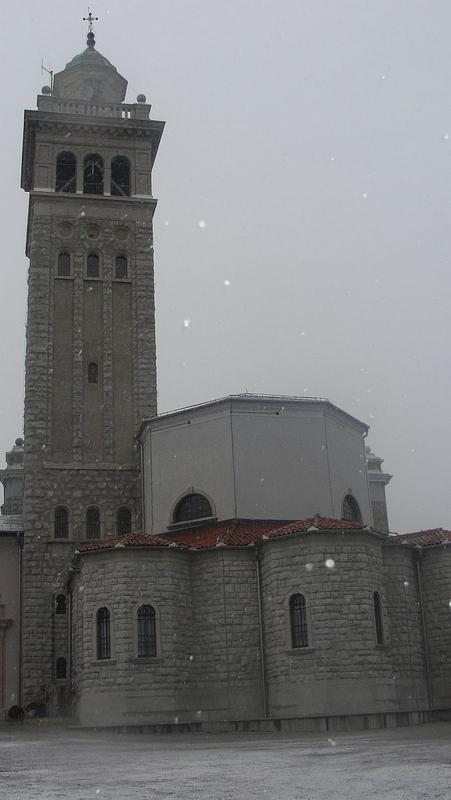
Sveta Gora, a mountaintop monastery above the town of Nova Gorica, is one of several well-known pilgrimage sites in Slovenia. However, it stands apart not just because of its spectacular location overlooking much of western Slovenia but also because of its unusually turbulent history.
A medieval church that once stood on the site was burned down by the Turks. Sveta Gora’s modern history began in 1539 when an image of the Virgin Mary appeared to a local shepherd girl; the Virgin asked for a place of worship to be built on the site. According to legend, local authorities did not believe the girl’s story at first and had her jailed, but the Virgin helped the girl to break out of jail, proving that the apparition had been real. Almost immediately, Sveta Gora became a popular pilgrimage destination.
Within a few years, a makeshift wooden chapel was replaced by an ornate church. In 1565, the artist Jacopo Negretti created a painting of the apparition of the Virgin, and soon Franciscan friars - refugees from Bosnia - set up a monastery on Sveta Gora.
The heyday of the religious life on the site was cut short in 1786. That’s when Hapsburg Emperor Joseph II expelled the Franciscan order from the mountain as part of his reforms. He announced plans for the monastery complex to be sold and even had Negretti’s statue moved out. The local reaction was overwhelmingly negative, however, and the statue quickly returned to Sveta Gora, whose church was also reopened. The Franciscans, meanwhile, had to wait until 1901 to return their monastery.
During World war I, Sveta Gora found itself on the frontlines. A few years earlier, the monastery’s church had been officially upgraded to a basilica by the Vatican, but by the end of the war, it mostly in ruins. The statue of the Virgin only survived the war because it had been removed from the premises.
After the Great War, Sveta Gora was reconstructed, but the area became a part of Italy for almost three decades. It even got Italian-speaking Franciscan friars.
When World War II broke out, the historic statue of the Virgin was evacuated again, and the monastery complex was briefly used as a German fort. Surprisingly, it managed to avoid major damage, even though one Partisan bombing raid was only canceled at the last minute because of bad weather.
Today, Sveta Gora, once again home to Slovenian-speaking Franciscans, remains a popular pilgrimage destination. It even houses a restaurant and a family counselling center. It is also a part of a network that connects pilgrimage sites in Slovenia and Italy- symbolizing a commitment to peace in an area so frequently ravaged by conflict.

































































